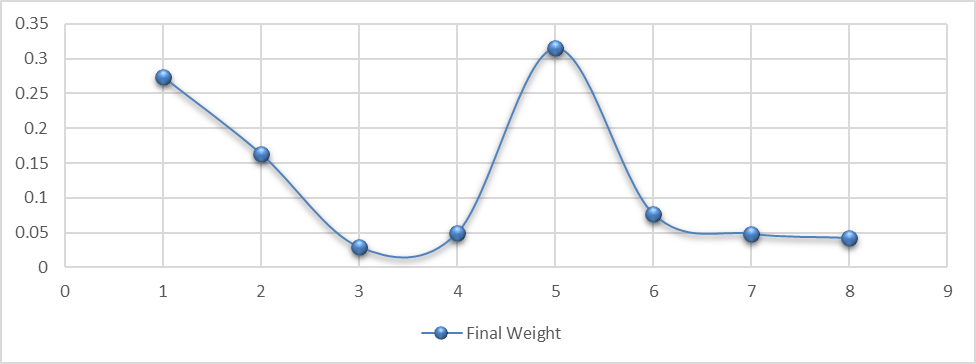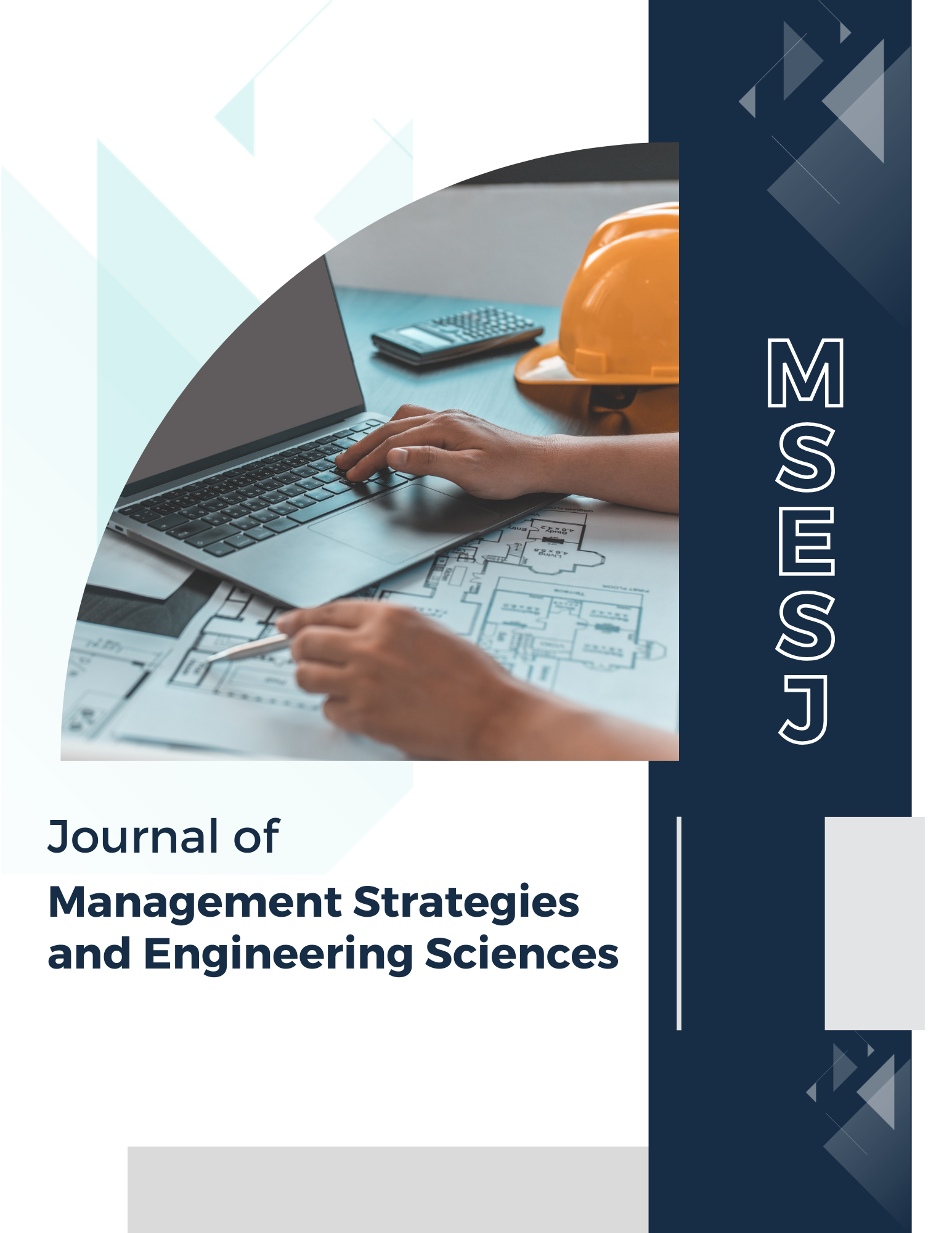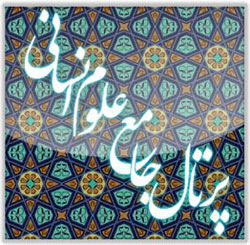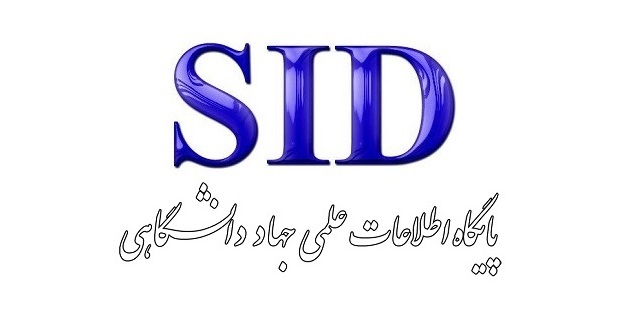Developing Empowerment Strategies and Physical Analysis of Deteriorated Urban Fabric Using an Integrated AHP and SWOT Approach (Case Study: District 12 of Tehran)
Keywords:
Deteriorated urban fabric, regeneration, renovation, planning, AHP-SWOTAbstract
One of the challenges facing every city is the presence of deteriorated urban fabric. Deteriorated fabrics are not merely collections of buildings, streets, and alleys but are also socio-residential complexes formed by various social, economic, and cultural variables, among others. This study adopts a descriptive-analytical approach, utilizing field studies and library research methods, and employs the SWOT model and the Analytical Hierarchy Process (AHP) with the assistance of Expert Choice software. In this research, the strengths, weaknesses, opportunities, and threats of the deteriorated urban fabric in District 12 of Tehran have been analyzed. The findings from the above model analysis indicate that the most significant strengths include the preparation of a rehabilitation and renovation plan for the deteriorated fabric (final weight: 0.315), the presence of urban infrastructure such as water, electricity, and gas (final weight: 0.274), and easy access to the market and other parts of the city (final weight: 0.163). The most important weaknesses are the high unemployment rate (final weight: 0.284), low income levels (final weight: 0.195), and inadequate pathways (final weight: 0.158). Additionally, the most significant opportunities include the historical residential background dating back to the Safavid era (final weight: 0.41), proximity to city shopping centers (final weight: 0.184), and the presence of residential areas surrounding the fabric (final weight: 0.123). Meanwhile, the major threats to the area during the process of organizing, renovating, and rehabilitating include the increasing influx of migrants into the fabric (final weight: 0.349), the negative perception of others towards residing in this area (final weight: 0.216), and the lack of attention to public participation (final weight: 0.198). The final analyses in this study have led to key strategies for the improvement and renovation of the deteriorated urban fabric in the studied area.
References
A. Jafari Naeimi, A. Mandegari, and M. Rouhani, "Migration and the issue of atomization: A qualitative study among migrant women in Yazd city," Strategic Research on Social Issues in Iran, vol. 12, no. 2, pp. 1-30, 2023.
K. Kamyar Rad, K. Kamyar Rad, and A. Safar, "The right to a safe city from the perspective of human rights and Iranian law," Legal Research, vol. 21, no. 51, pp. 177-202, 2022.
M. Naqsan Mohammadi and A. Abbasi, "Cultural contextualization in interventions in the historical fabric of Abarkooh," Yazd Culture, vol. 2, no. 2, pp. 121-145, 2021.
D. Mahdavi, M. Mohammadi Gojani, and M. Nazari, "Investigating the regeneration of dilapidated fabrics from the perspective of urban branding (Case study: Dilapidated fabric of Shahr-e Kord)," Spatial Planning, vol. 14, no. 2, pp. 163-186, 2024.
N. Sobhani, H. Hikmatnia, F. Fakhartazeh Yazdi, and S. Salmanzadeh, "Evaluating dilapidated urban fabrics with an urban regeneration approach (Case study: Miandoab city)," Human Geography Research, vol. 55, no. 3, pp. 115-139, 2023, doi: 10.22059/jhgr.2022.332976.1008401.
W. Peerapun, "Participatory planning approach to urban conservation and regeneration in Amphawa community, Thailand," Asian Journal of Environment Behavior Studies, vol. 3, no. 6, pp. 147-155, 2018. [Online]. Available: https://doi.org/10.21834/aje-bs.v3i6.245.
Y. Peng, Y. Lai, X. Li, and X. Zhang, "An alternative model for measuring the sustainability of urban regeneration: The way forward," Journal of Cleaner Production, vol. 109, no. 4, pp. 76-83, 2015. [Online]. Available: https://doi.org/10.1016/j.jclepro.2015.06.143.
B. Christelle and A. Damidavičiūtė, "Urban regeneration in Rio de Janeiro favelas during the Olympic Games of 2016," 2016. [Online]. Available: https://projekter.aau.dk/projekter/files/239530970/Master_Thesis_final.pdf
K. Dean and C. Trillo, "Assessing sustainability in housing led urban regeneration: Insights from a housing association in Northern England," Architecture_MPS, vol. 15, no. 2, pp. 1-18, 2019. [Online]. Available: https://doi.org/10.14324/111.444.amps.2019v15i2.001.
P. G. Martí, M. Carcia, and S.E, "Identifying opportunity places for urban regeneration through LBSNs," Cities, vol. 90, pp. 191-206, 2019. [Online]. Available: https://doi.org/10.1016/j.cities.2019.02.001.
M. Biravand Zadeh, S. Sarli, F. Salari Sardari, and N. Sobhani, "Analysis of the spatial-physical structure of the central fabric of Khorramabad city," Journal of Urban Landscape Research, vol. 1, no. 9, pp. 4-12, 2015.
L. Bakhtiari, F. Sasanpour, A. Shamaei, and M. Soleimani Mehranjani, "Analysis of sustainable regeneration in the central sections of cities with a scenario-writing approach: Case study of the central section of Hamadan," Geography and Urban Space Development, vol. 7, no. 1, pp. 231-259, 2020.
A. Siafzadeh, Urban management of metropolitan Tehran (Opportunities and challenges). Tehran, Iran: Amir Kabir Publications, 2013.
Z. Tashke, K. Zadeh Tajrishi, R. Fathali Lavasani, A. Farahani, and A. Ramazani Farani, "Adaptation and factor structure of the sexual mindfulness questionnaire in married Iranian individuals in 2021-2022," Iranian Journal of Psychiatry and Clinical Psychology, vol. 30, no. 1, pp. 0-0, 2024. [Online]. Available: https://doi.org/10.32598/ijpcp.30.2152.2.
M. Rasouli, M. Ahad Nejad, and M. T. Heydari, "Analyzing the importance-performance of key success factors in the regeneration of inefficient urban fabrics with an emphasis on stakeholders (Case study: Zanjan city)," Quarterly Journal of Urban and Regional Development Planning, vol. 16, no. 6, 2021.
C. Couch, "Urban Renewal: Theory and Practice," Basingstoke: Macmillan Fine Arts Architecture and Urbanism, vol. 3, no. 45, pp. 49-62, 1990. [Online]. Available: https://doi.org/10.1007/978-1-349-20912-5_3.
C. Couch and A. Dennemann, "Urban regeneration and sustainable development in Britain: The example of the Liverpool Ropewalks Partnership," Cities, vol. 17, no. 2, pp. 137-147, 2000. [Online]. Available: https://doi.org/10.1016/S0264-2751(00)00008-1.
P. Roberts, The evolution, definition and purpose of urban regeneration In: P. Roberts and H. Syke (eds.) Urban Regeneration: A Handbook. British Urban Regeneration Association, SAGE Publications, 2000, pp. 9-36.
G. Goudarzi, P. Ziviyar, and A. Estelaji, "Designing a model for the management process of dilapidated urban fabrics with a governance approach," Quarterly Journal of Urban Planning and Development, vol. 13, no. 5, pp. 139-168, 2021.
S. Yazdani, F. Fatahizadeh, A. Sheikhul-Eslami, and G. Etemad, "Sustainable urban regeneration in historical contexts with an integrated approach (case study: Darwaz Ray neighborhood and Qom market area)," Geographical Research Quarterly, vol. 36, no. 4, pp. 446-437, 2021.
F. Veisi, S. Moradi, and A. Divani, "Comparing the sustainable urban regeneration capacity in neighborhoods with dilapidated and informal urban fabrics (Case study: Marivan city)," Urban Planning Geography Research, vol. 8, no. 1, pp. 45-71, 2020.
F. Hashemzadeh Qaleh Jogh, S. Abizadeh, and I. Safar Ali Zadeh, "Identifying and prioritizing the most important factors affecting the advancement of urban management programs in the dilapidated fabric (Case study: Maku city)," Urban Research and Planning, vol. 11, no. 40, pp. 137-145, 2020.
A. Mirzakhani, M. Turro, and S. Jalilisadrabad, "Key stakeholders and operation processes in the regeneration of historical urban fabrics in Iran," Cities, 2021. [Online]. Available: https://doi.org/10.1016/j.cities.2021.103362.
A. Yiannakou, "Urban regeneration as a perpetual planning process: Understanding the role of stakeholders in property-led regeneration projects in Greek cities," Local Economy, vol. 32, no. 2, pp. 83-100, 2020. [Online]. Available: https://doi.org/10.1177/0269094220914470.
C. Rădulescu, O. Stefan, and R. Gheorghe, "Management of Stakeholders in Urban Regeneration projects: Case Study: Baia-Mare, Transylvania," Sustainability, vol. 8, pp. 1-22, 2016. [Online]. Available: https://doi.org/10.3390/su8030238.
L. Zhang and Z. Xiaobin, "City branding and the Olympic effect: A case study of Beijing," Cities, vol. 26, no. 2, pp. 245-254, 2009. [Online]. Available: https://doi.org/10.1016/j.cities.2009.05.002.
P. Rizzi and I. Dioli, "From strategic planning to city branding: Some empirical evidence in Italy," Revista De Turismo Y Patrimonio Cultural, vol. 8, no. 3, pp. 39-49, 2010. [Online]. Available: https://doi.org/10.25145/j.pasos.2010.08.033.












